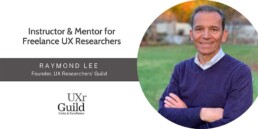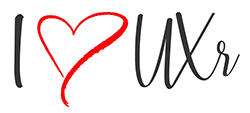When to Use Which Quantitative Methods
When to Use Which Quantitative UX Research Methods
Moderated by Michele L. Oliver, Ph.D., UXr Guild Board President
This is an abridgment; view the full video presentation here.
Session 1 – September 8, 2022
When to use Quantitative Methods
In simple terms, quantitative methods are used anytime we want to observe users’ interaction with products and to better understand the impact of those interactions.
But quantitative methods, however useful, may seem daunting at first. By taking time to familiarize oneself with these methods, and know when to use them, they will become some of the most important tools in the UX researcher’s toolbox.
When to Use Usability Testing
This method is used when we want to evaluate users’ behavior as they interact with a product. Here’s an example where this method would be useful.
“I would like to examine the validity of some assumptions I have about how medical professionals navigate a site designed to present medical information to healthcare providers.”
Usability testing is all about getting real people to interact with a product: whether it be a website, an app, or anything that you built, and to observe their behavior and their reactions to it. From usability testing, we can measure effectiveness by way of success, rates and the number of errors. We can measure efficiency by way of average time on task, the number of path deviations and then satisfaction through some type of survey. We don’t need to look at advanced statistical data; we can just look at number/frequency counts. The raw data alone can tell us a lot about what’s going on in our study. Usability testing allows us to validate our product, the prototype which we want to confirm that our product meets users expectations. Usability testing helps us develop empathy, and to avoid that tunnel vision that can occur when we think we understand how a user feels.
Pros of usability testing: Involves users in the design process; Identifies users’ expectations; Improves users’ experience; Discovers hidden issues; Ensures the system’s functionality meets business requirements.
Cons of usability testing: Recruiting challenges; Random selection is not 100% representative of the population; May be costly (in time and money).
When to Use Surveys
A survey approach helps when we want to assess users’ opinions and experiences and to see how to incorporate quant methods in research. Surveys are also used to monitor ongoing satisfaction, identifying any opportunities for improvement. This method would be effective for the following scenario:
“I want to understand how satisfied users are with their current registration process as well as how important it is that they have specific (identified) needs addressed in the solution.”
Through interviews, we are able to derive needs and create need statements. It’s important to keep the following points in mind when creating surveys:
- In general, it’s best to keep them short. At times, however, it may be important to understand as many needs as possible which may require longer surveys. Best practice would say to shoot for at least 80 needs.
- Ask each participant to rate how important each need is for them.
- Ask how satisfied they are with the current solution.
- From the responses, which needs are being underserved, as well as those that are being overserved can be determined.
Pros of surveys: Economical in time (and perhaps money); Anonymity; Provides a measure of users’ opinions or experiences; Can be conducted frequently to foster customer engagement.
Cons of surveys: No personal interaction; Questions may be biased (priming effect, social desirability, yea-saying, etc.); Possibility of carryover or order effects; Survey fatigue.
When to Use A/B Testing
A/B Testing is used when we want to assess how well different options perform. The following scenario would be best analyzed through A/B Testing:
“I have a hypothesis about this, but I’d like to test which page option will bring in the most donations.”
It’s really straightforward. We have two groups where one is given one condition, and the other, the second condition. We then do a simple test, called a high-test, to see if there are any significant differences.
Pros of A/B Testing: Clear evidence based on behavior; Improved content engagement; reduced abandon/bounce rates; Increased conversion rates.
Cons of A/B Testing: Time consuming; Only works for specific goals; Doesn’t improve a site that is already fundamentally flawed; No additional behavior insights.
When to Use Card Sorts
Card sort is a quant method in which participants group individual labels that are written on cards. This method uncovers how users think about things and when we want to review existing IA or plan new IA. This would be the best method with the following research request:
“I want to gain insight into how our products’ menu structure matches users’ mental models.”
This method has a qualitative feel because you’re using words and mental models, but it also has quant data underpinning it.
Pros of Card Sorts: Simple and inexpensive; Quick; User-focused; Provides great information.
Cons of Card Sorts: It Ignores tasks; Analysis takes more time than other methods; It doesn’t uncover the “why”.
When to Use Tree Testing
Tree testing addresses the idea of how easily users can find information and exactly where people get lost trying to locate what they are looking for; when we want to quickly see where the problems areas of a site structure exist. A general request that would benefit from Tree Testing might be:
“I want to see how easily users can find information on our app/website.”
Other questions that could be addressed through Tree Testing might include:
- Do my labels make sense to users?
- Is my content grouped logically to users?
- Can they find what they need easily?
- And if not, what are some of those blockers that are keeping them from doing so?
Pros of Tree Testing: Short test sessions; Can easily be conducted remotely; Quick data analysis.
Cons of Tree Testing: Basic form of the test means that there will not be visual elements that may help users navigate; Remote testing does not allow for follow-up questions (and the “why”).
Beyond these five methods, these additional quant methods can also be used in UX research:
- Analytics look at what people are doing with a live product. Where do they go? Where do they click? What features are they using? What pages did they decide to abandon? We can get really good information from analytics.
- Desirability Studies identify attributes associated with a product or brand by showing a prototype to users and asking them to describe the design and features from a list of descriptive words.
- Eye Tracking Testing requires special equipment and shows where a users’ eyes go as they’re interacting with an interface.
- Heatmaps focus on a user’s mouse allowing visualization of which records they hover over, where they are scrolling and clicking.
With all these methods, it’s important to remember that nothing we do is done strictly in isolation. We can couple quantitative methods with qualitative methods and follow up with asking questions. And some of the methods listed here can be both qualitative and quantitative.
“There is a big difference between making a simple product and making a product simple.”
Des Traynor, Co-Founder of Intercom
How can qualitative researchers use quantitative methods?
- As a qual researcher, you already have transferable skills: you are a great moderator, listener and thinker.
- You can synthesize data, even if it’s numerical data.
- You already know how to put people at ease and have developed empathy for working with users.
- You do need to be familiar with available tools, but you don’t need to have a strong statistical background
How do you demonstrate quant skills in a UX research portfolio?
- If you are not a designer, consider showing the jobs you’ve done and include a sampling of questions you’ve asked.
- Include how you analyzed the data without making it overly complicated.
- Because sharing a product might include proprietary information, focus instead on telling the story of the research. In this way, you are able to show your strengths and how you applied them in certain scenarios.
How do you interview participants who are reluctant to talk?
- Building up trust engenders confidence that what is done will be kept secure and confidential.
- Users and researchers may both be nervous. Building rapport will help minimize many issues that might arise on either side.
- Making users feel comfortable will help balance the scale, and hopefully help them act as normally as they would in other situations.
- Spending some extra time just talking with users before diving into the research part of the interview may help to calm them down and loosen them up a bit.
- Creating and using standard license forms can also help build trust in your team and will make people who might feel uncomfortable before the research starts.
How do you handle research participants who tell you that they liked everything?
- Remind users that you did not design the prototype, so they know that they are not going to hurt your feelings.
- Tell them that you want to learn from them, and know how they really feel. This helps them to let down their guard and be willing to share their honest thoughts.
What job titles should a person target if they are more interested in research operations for UX?
- Look into joining Research Ops channels on Slack.
- Networking with others is a great way to find out how others have navigated this same path.
The Q&As of Quantitative Methods, Session 2 will be held October 13 with Session 3 on November 10, 2022. Register here.
Michele has a Ph.D. in Experimental Psychology with an emphasis on Psychophysiology, Statistics, and Research Methods. She has been a Senior Lecturer and Adjunct faculty member. She is currently Principal UX Researcher at Ellucian, a provider of SAAS solutions for higher education. Contact Michele at michele@uxrguild.com or through the UXr Guild Slack Channel.
Past Events
• Book Groups
– Accessibility for Everyone
• Do You Want to Be a UXR Consultant?
• Research Rumble
Session 1 – Research Democratization
Session 2 – Are Personas an Effective Tool?
Session 3 – How Important are Quant Skills to UX Research?
Session 4 – AI in UX Research
Session 5 – Do UX Researchers Need In-depth Domain Knowledge?
Session 6 – Evangelizing Research: Whose Job Is It?
• How to Freelance
– Are You Ready to Freelance?
– Do You Need a Freelance Plan?
– How Do You Find Freelance Clients?
– Which Business Entity is Best for Freelancers?
– How to Manage a Freelance Business
– How to Start and Manage Your Freelance Business
– What is a Freelance UXR/UX Strategist?
– Can Your Employer Stop You From Freelancing?
• Leveling Up with UX Strategy
Session 1 – What is UX Strategy?
Session 2 – UX Strategy for Researchers
Session 3 – Working with Your UX Champions
• Quantitative UX Research Methods
Session 1 – When to Use Which Quantitative Methods
Session 2 – How to Use Statistical Tests in UX Research
Session 3 – Using Advanced Statistics in UX Research
• Transitioning to Freelance UX Research
Session 1 – Transitioning to Freelance
• Farewell Academia; Hello UXr
Session 1 – How to Create a UXr Portfolio
Session 2 – Creating UX Research Plans, Moderation Guides, and Screeners
Session 3 – Recruiting and Fielding UX Research Study Participants
Session 4 – Creating UX Analysis Guides and Portfolios
Session 5 – Portfolio Case Studies and LinkedIn Profiles, and Partnering with Recruiters
Session 6 – Framing Impact in UXr Portfolios and Resumes
• UX Research in the Automotive Industry
• How to Make Your Life as a Freelancer the Best it Can Be
– UX Research Freelance Work-Life Balance
• UXr Guild is Meeting UX Researchers in New York City
– How to Become a Freelance UX Researcher
Past Events
• How to Make Your Life as a Freelancer the Best it Can Be, August 12, 2021, via Zoom
– UX Research Freelance Work-Life Balance
• UXr Guild is Meeting UX Researchers in New York City, July 8, 2021, New York City
– How to Become a Freelance UX Researcher
What is UX Strategy?
What is UX Strategy?
Moderated by Jillian Hudson, UXC; UXr Guild Board of Directors
This is an abridgment; view the full video presentation here.
Session 1 – September 13, 2022
What is UX Strategy?
According to CareerFoundry, UX Strategy is “a detailed plan for how we keep the users’ experience … in line with the overall goals and objectives at the Company. UX strategy can help ensure that the organization’s vision of what they want the customers/users to experience can become a reality while staying within predetermined company guidelines.”
UX strategy is literally the “User + Business” and addresses the following questions:
- What are the business goals?
- What are the users’ needs?
- How can we merge them together?
We create the best situation for both by showing how we can make business goals come true by meeting the users’ needs. Everything else is all persuasion and influence, and becoming an authority.
What is Good UX Strategy?
In Robert Hockman, Jr’s ebook, The Field Guide to UX Strategy, UX Pin, he states: “What a good UX strategy entails is researching and recognizing constraints and concerns from all sides and painting a big red target on the wall so that everyone involved can make decisions that serve researched, vetted and defined objectives.”
A good UX strategy entails researching and recognizing the constraints and concerns from all sides. Doing this allows everyone involved to make decisions that serve research embedded and defied objectives.
What are the components of good strategy?
- An “Authentic” Vision of the Future: A reasoned BHAG – a Big Hairy Audacious Goal. Since stakeholders can sometimes lose the big picture, it’s important to focus on the overriding objective, and help them plan and prepare in order to meet that goal.
- Plan: One that answers the “what,” “why,” “who,” and “how.” This plan supports the strategic view while implementing tasks.
- Strategic milestones: A charted course of action aligned with objectives for reaching this vision. These milestones of where you want to go, and how long it’s going to take you to get there, will help you stay in course. Strategy is a living document that has to be refreshed every once in a while.
- Governance: For decision making and change management guidelines (to support long-term commitment to executing the strategy), you need governance and continually massaging your strategy and roadmap.
- The Right Team: A committed, cross-functional, and multi-level group. Strong, focused, with executive support. That means people from UX, engineering, product, and business. You are basically finding all of this.
What is Bad UX Strategy?
- Short-term tactics, baby steps, descoping user needs out of projects.
- Any strategy that we do once and put on the shelf. Those are called SPOTS (Strategic Plans on the Shelf) and are not good UX strategy because it doesn’t matter how well thought out, how detailed it is, or how many deliverables you have. If it’s not implemented, it’s not doing any good.
- UX going it alone without buy-in of product and business. This is not something we can do alone. Getting the buy-in from business is essential since they’re the ones that control the budget. And if they’re bought in, then product and engineering will come along.
Who Owns the UX strategy?
By virtue of it being the UX strategy UX owns it. The fact that we refer to it as “UX Strategy,” however, might imply that the onus is on us to do it alone. But, we can’t do it alone. It has to be something that is worked on collaboratively. You need to have everyone’s buy-in and input so that everyone feels ownership.
How Often Should I Meet with Stakeholders?
To determine this, it’s important to consider your rapport with your stakeholders. Could that rapport benefit from more frequent interaction?
You could also ask them the following questions:
- “Do you want to be included on all my research presentations?”
- “Do you want to be invited to observe all my research presentations?”
- “How can I help you?”
They may not involve themselves or attend everything, but extending the invitation lets them know what’s going on, who you are talking to, and what you’re talking to them about. It piques their interest, keeps them engaged, and keeps your name in front of them. Not only will they know you better, they will know you are there to assist them with any questions they have, or challenges they are facing.
How to Communicate with Stakeholders and Across Teams
One of the key points in speaking to stakeholders about UX, and having them hear you, is to speak with them in their own language. You have to use the business language they use and not the UX language that we would use when speaking with colleagues. Sometimes there is a misconception that UX is all “touchy-feely” and needs to make everybody feel happy. But stakeholders are focused on the bottom line, making profit, and being successful. Therefore, it’s crucial to communicate the concept that helping the users, will ultimately, help them.
So, instead of saying, “Let’s do UX Strategy,” say, in essence, “I want to help to create a vision of where you’re going. I’ve done some research and here are some strategies that will help you progress toward your goals.” This approach communicates an understanding of what your stakeholders’ goals are in the first place, and a willingness to move in a direction to achieve them.
It’s equally important to understand that your own communication style might be completely different from stakeholders, and product and engineering team members. Taking the time to know yourself better, will help you to communicate more effectively with others.
What is the Difference Between Leadership and Management?
UX strategy is a leadership function, but leadership is not rank. You can, and should, learn to lead without authority. On the other hand, management is rank, but that is not to say that people who are in management, can’t be leaders. Obviously they can be both. The difference here is that you can’t, and should not, manage without authority. Management is something that is conferred to you by your employer. It is not something that you could do on your own. Leadership is something you can do on your own; you don’t need somebody’s permission to be a leader.
Leadership is transformative and provides vision, focuses on the future, seeks change and motivates others.
Management, on the other hand, is transactional and drives quality execution, oversees current processes, analyzes and executes team performance and manages others.
In the informative, and highly entertaining, video, “Pioneering Leadership: First Follower Principle,” a lone man dancing in a park becomes a leader the instant one person joins him. This then gives confidence to others to follow suit.
“Management is efficiency in climbing the ladder of success; leadership
determines whether the ladder is leaning against the right wall.”
Stephen R, Covey
Meeting Business Goals and User Needs
We always want to make the users’ lives better with the work that we produce. It’s just a slight shift to thinking about what the business needs in order to service the users’ needs. We stand a much better chance of doing that if we’re speaking to the business in the way that they need to hear it. Everybody wants to be successful, and when you make the user successful, you make the business successful. But it takes turning the UX lens towards the users first, and then towards the people that you’re working with and understanding them in a way that helps facilitate the work that you’re doing.
You may be doing this unintentionally, and not aware of the impact you’re having, but with this mind shift, you will do it intentionally. And intentionality really is the key.
Leveling Up with UX Strategy Session 2 – October 11, 2022 – “How to Create and Identify UX Champions.”
Leveling Up with UX Strategy Session 3 – December 5, 2022 – “How to Initiate UX Research-led Projects that Get Prioritized and Funded.”
Jillian Hudson is NN/g UX certified in Research and Management. She worked as a UX Product Designer/Usability Expert for American Airlines and as a UX Strategist and Researcher for Bank of America, and Wells Fargo Bank. She is currently Principal UX Research Strategist at XPO Logistics. Contact Jillian through the UXr Guild Slack channel
Past Events
• Book Groups
– Accessibility for Everyone
• Do You Want to Be a UXR Consultant?
• Research Rumble
Session 1 – Research Democratization
Session 2 – Are Personas an Effective Tool?
Session 3 – How Important are Quant Skills to UX Research?
Session 4 – AI in UX Research
Session 5 – Do UX Researchers Need In-depth Domain Knowledge?
Session 6 – Evangelizing Research: Whose Job Is It?
• How to Freelance
– Are You Ready to Freelance?
– Do You Need a Freelance Plan?
– How Do You Find Freelance Clients?
– Which Business Entity is Best for Freelancers?
– How to Manage a Freelance Business
– How to Start and Manage Your Freelance Business
– What is a Freelance UXR/UX Strategist?
– Can Your Employer Stop You From Freelancing?
• Leveling Up with UX Strategy
Session 1 – What is UX Strategy?
Session 2 – UX Strategy for Researchers
Session 3 – Working with Your UX Champions
• Quantitative UX Research Methods
Session 1 – When to Use Which Quantitative Methods
Session 2 – How to Use Statistical Tests in UX Research
Session 3 – Using Advanced Statistics in UX Research
• Transitioning to Freelance UX Research
Session 1 – Transitioning to Freelance
• Farewell Academia; Hello UXr
Session 1 – How to Create a UXr Portfolio
Session 2 – Creating UX Research Plans, Moderation Guides, and Screeners
Session 3 – Recruiting and Fielding UX Research Study Participants
Session 4 – Creating UX Analysis Guides and Portfolios
Session 5 – Portfolio Case Studies and LinkedIn Profiles, and Partnering with Recruiters
Session 6 – Framing Impact in UXr Portfolios and Resumes
• UX Research in the Automotive Industry
• How to Make Your Life as a Freelancer the Best it Can Be
– UX Research Freelance Work-Life Balance
• UXr Guild is Meeting UX Researchers in New York City
– How to Become a Freelance UX Researcher
Past Events
• How to Make Your Life as a Freelancer the Best it Can Be, August 12, 2021, via Zoom
– UX Research Freelance Work-Life Balance
• UXr Guild is Meeting UX Researchers in New York City, July 8, 2021, New York City
– How to Become a Freelance UX Researcher
How to Freelance for UX Researchers
How To Freelance for UX Researchers
You’ve already done the most important work to become a freelance researcher: developed excellent research skills. Now the Guild can help you understand what freelancing requires, assess your readiness to transition, and take the steps necessary to begin.
How to Freelance is a five-month live zoom course to prepare experienced UX researchers to work freelance. The course is offered by the UX Researchers’ Guild at no charge.
You’re more likely to successfully
transition to freelancing if you join
with others who have the same goal
The How to Freelance program helps you transition to freelance by:
- Identifying your research and professional strengths.
- Developing your unique offering and freelancing plan.
- Establishing the appropriate business entity.
- Managing income and expense records, tax deposits, and tax returns.
- Building your network and marketing your services.
The Guild is a community that supports you as you learn, transition, and begin working as a freelance UX Researcher.
“I’m so impressed by the wealth of information that you’re providing. I wanted to confirm — is there a fee for this course?” (No fee!)
How to Freelance Program:
Session 1:
Are You Ready to Freelance?
Conduct a multi-dimensional self-assessment.
Determine your readiness for freelancing.
Decide whether to move ahead with freelancing.
Session 2:
Create Your Unique Freelancing Plan
Consider your education, strengths, research experience, and other experience.
Identify industries, products, research methods and tools with which you’re familiar.
Develop your plan for working freelance (part vs. full-time; hourly vs. fixed bid, etc.)
Special Guest: Martha Malloy
Session 3:
How to Market Your Services
Building your network online with LinkedIn, Facebook, Twitter, Slack, etc.
Networking in person through Meetups and UX groups.
Your resume, case studies, website, webinars, mentoring, etc.
Session 4:
Select and Establish Your Legal Entity
Which is right for you: sole proprietorship, LLC, or corporation?
Creating legally binding agreements and contracts.
Manage collections and disputes.
Guest: John Thompson, NYC Freelance Lawyer
Session 5:
Manage Your Bidding, Books, Benefits and Business
Bookkeeping: timesheets, invoicing, income and expenses, tax deposits, tax returns.
Benefits: Medical/dental insurance, retirement/investment planning, and time off
Session 5: Manage Your Bidding, Books, Benefits and Business
Tuesday, December 13, 2022 at 5 pm PT / 8 pm ET
UX Researchers based in the U.S. or Canada with at least 3 years of work experience are invited to apply.
Past Events
• Book Groups
– Accessibility for Everyone
• Do You Want to Be a UXR Consultant?
• Research Rumble
Session 1 – Research Democratization
Session 2 – Are Personas an Effective Tool?
Session 3 – How Important are Quant Skills to UX Research?
Session 4 – AI in UX Research
Session 5 – Do UX Researchers Need In-depth Domain Knowledge?
Session 6 – Evangelizing Research: Whose Job Is It?
• How to Freelance
– Are You Ready to Freelance?
– Do You Need a Freelance Plan?
– How Do You Find Freelance Clients?
– Which Business Entity is Best for Freelancers?
– How to Manage a Freelance Business
– How to Start and Manage Your Freelance Business
– What is a Freelance UXR/UX Strategist?
– Can Your Employer Stop You From Freelancing?
• Leveling Up with UX Strategy
Session 1 – What is UX Strategy?
Session 2 – UX Strategy for Researchers
Session 3 – Working with Your UX Champions
• Quantitative UX Research Methods
Session 1 – When to Use Which Quantitative Methods
Session 2 – How to Use Statistical Tests in UX Research
Session 3 – Using Advanced Statistics in UX Research
• Transitioning to Freelance UX Research
Session 1 – Transitioning to Freelance
• Farewell Academia; Hello UXr
Session 1 – How to Create a UXr Portfolio
Session 2 – Creating UX Research Plans, Moderation Guides, and Screeners
Session 3 – Recruiting and Fielding UX Research Study Participants
Session 4 – Creating UX Analysis Guides and Portfolios
Session 5 – Portfolio Case Studies and LinkedIn Profiles, and Partnering with Recruiters
Session 6 – Framing Impact in UXr Portfolios and Resumes
• UX Research in the Automotive Industry
• How to Make Your Life as a Freelancer the Best it Can Be
– UX Research Freelance Work-Life Balance
• UXr Guild is Meeting UX Researchers in New York City
– How to Become a Freelance UX Researcher

UXr Guild old homepage 1/3/24
Welcome to the UX Researchers’ Guild ...
Where independent researchers join together for mutual benefit
What Can The Guild Do for You?
Establish connections with research peers
Provide new work opportunities through the Guild
Save time marketing and managing your business
Be part of an association whose expertise clients can trust
What Can You Do for the Guild?
Join us!
Work, collaborate, and connect.
Volunteer for pro-bono initiatives
Invite a colleague to the Guild
Together We Can …
Unify our individual strengths as a guild
Share projects too large for one individual
Create a better way to work independently
Are you a researcher Interested in learning more?
Please visit our researchers’ page, read frequently asked questions, or apply to the Guild.
Are you a client interested in hiring a contract researcher?
Please visit our clients’ page, or contact us to find the best researcher for your project.
“Thank you, UXr Guild! I had an opening in my schedule and you filled it with a mobile usability study. The process was smooth, the people were nice to work with, and the payment was on time. I look forward to working with you again!”
Cory, Independent UX Researcher
How to Make Your Life as a Freelancer the Best it Can Be
How to Make Your Life as a Freelancer the Best it Can Be
Becoming a freelancer can provide flexibility and freedom, but freelance life is not without challenges. Join us as veteran freelancer Cory Lebson shares how to achieve success and overcome feelings of isolation, boredom, and loneliness. What he’s discovered is that it’s not just about the freelance work that you do, but how you structure your business to prevent being overwhelmed; how you build out and connect professionally with others; how you engage and involve yourself in unpaid UX activities and meetups; and how you intertwine your personal and professional identities to find overall satisfaction.

Cory Lebson has been a freelance UX researcher for 13 years. He is a former president of both the International and the Washington, DC, chapters of the User Experience Professionals Association (UXPA) and is the author of The UX Careers Handbook.
Cory Lebson has been a freelance UX researcher for 13 years. He is a former president of both the International and the Washington, DC, chapters of the User Experience Professionals Association (UXPA) and is the author of The UX Careers Handbook.
Please join us on Thursday, August 12 at 3:00 pm PT; 4:00 pm MT; 5:00 pm CT; 6:00 pm ET for an engaging presentation and Q&A.
Agenda
- 3:00 – 3:05 pm PT | Introductions
- 3:05 – 3:50 pm PT | Presentation and Q&A by Cory Lebson
- 3:50 – 4:00 pm PT | Giveaway Prizes
- 4:00 – 4:25 pm PT | Breakout Room Networking
Networking: We will facilitate small group networking after the event for those who are interested. There will be two 10-minute sessions for groups of four participants. We will also have a shared spreadsheet for those who would like to connect with other participants.
Q&A: You can submit questions for Cory to answer using the app Slido. Please enter event code: UXr-Cory, or click the button below.
We will award prizes at the end of the presentation, to members chosen from each group:
- Freelance UX Researchers LinkedIn Group
- Followers of the UXr.work LinkedIn page
- Participants on the call
The prizes for this event are The UX Careers Handbook, by Cory Lebson, $25 Amazon gift card.
Past Events
• How to Make Your Life as a Freelancer the Best it Can Be, August 12, 2021, via Zoom
– UX Research Freelance Work-Life Balance
• UXr Guild is Meeting UX Researchers in New York City, July 8, 2021, New York City
– How to Become a Freelance UX Researcher
UXr Leaders
UX Research Leaders
If you are a UX research manager, director, or leader, there’s a new group just for leaders to meet, network, and share ideas. We invite you to be among the first to attend UXr Leaders and begin reaping the benefits professionally and personally.
- Your organization may benefit from the insights and recommendations of other leaders, helping you arrive at better solutions faster.
- You may benefit personally from an expanded network, career opportunities, and offers to collaborate on projects. A vibrant community of peers provides many options.
- Peer networks can be very beneficial. with a small investment of time, as peers share how they address research, staffing, and career challenges.
- Your experience and expertise may be helpful to others in the group.
- This is a volunteer-led organization with no fees.
We hope you’ll join with us — we look forward to meeting you.
Experience Leaders Forum
Leadership in UX Research is more than managing projects—it’s about inspiring teams, overcoming challenges, and creating a lasting impact. This session is your chance to gain deep insights into what it takes to grow as a research leader. You’ll hear personal stories from leaders who’ve transitioned into management, tackle tough topics like conflict resolution and team dynamics, and explore proven strategies for retaining top talent and fostering growth in your team. Whether navigating leadership challenges or looking to take your skills to the next level, this forum will give you actionable tools and a supportive network to help you thrive. Don’t miss this opportunity to invest in yourself and your future as a leader!
- Sarah Morgan, Ex-Research Director, FanDual
- Liz Freeman, Ex-Research Leader, FanDual, UserTesting
Please join us on Thursday, February 27, 2025 | 11 am PT | 2 pm ET
Free Registration: https://lu.ma/XLF2-25
This event is designed for those in leadership roles such as Research, Design, or Product Managers, Directors, etc. The Experience Leaders Forum (XLF) is presented by the UX Researchers’ Guild: https://uxrguild.com/
Once per quarter, we gather research leaders for a virtual meeting to discuss common challenges. We feature research leaders sharing lessons learned from their research and highlighting challenges they have faced and how they have addressed them. Each forum features a presentation, discussion, and networking with other leaders.
Attendance is limited to research leaders (managers, directors, etc.) based in the U.S. or Canada.
Past Events
• Growing Your Influence as a UX Research Leader, December 1, 2023
• Prioritizing Research Studies: Scaling the Impact of Your Research Team, February 2, 2023
• How to Prepare for a Layoff and Conduct a Layoff, November 17, 2022
Events
Guild Events
The Guild hosts monthly UX research events to provide opportunities for learning and networking. Topics include research practices, UX-adjacent books, career experience, and freelancing or consulting advice. These events are led by Guild volunteers, authors, community leaders, and industry experts. Join us!
Do you have an idea for a Guild Event that you’d like to host? Please apply.
Past Events
• Book Groups
– Accessibility for Everyone
• Do You Want to Be a UXR Consultant?
• Research Rumble
Session 1 – Research Democratization
Session 2 – Are Personas an Effective Tool?
Session 3 – How Important are Quant Skills to UX Research?
Session 4 – AI in UX Research
Session 5 – Do UX Researchers Need In-depth Domain Knowledge?
Session 6 – Evangelizing Research: Whose Job Is It?
• How to Freelance
– Are You Ready to Freelance?
– Do You Need a Freelance Plan?
– How Do You Find Freelance Clients?
– Which Business Entity is Best for Freelancers?
– How to Manage a Freelance Business
– How to Start and Manage Your Freelance Business
– What is a Freelance UXR/UX Strategist?
– Can Your Employer Stop You From Freelancing?
• Leveling Up with UX Strategy
Session 1 – What is UX Strategy?
Session 2 – UX Strategy for Researchers
Session 3 – Working with Your UX Champions
• Quantitative UX Research Methods
Session 1 – When to Use Which Quantitative Methods
Session 2 – How to Use Statistical Tests in UX Research
Session 3 – Using Advanced Statistics in UX Research
• Transitioning to Freelance UX Research
Session 1 – Transitioning to Freelance
• Farewell Academia; Hello UXr
Session 1 – How to Create a UXr Portfolio
Session 2 – Creating UX Research Plans, Moderation Guides, and Screeners
Session 3 – Recruiting and Fielding UX Research Study Participants
Session 4 – Creating UX Analysis Guides and Portfolios
Session 5 – Portfolio Case Studies and LinkedIn Profiles, and Partnering with Recruiters
Session 6 – Framing Impact in UXr Portfolios and Resumes
• UX Research in the Automotive Industry
• How to Make Your Life as a Freelancer the Best it Can Be
– UX Research Freelance Work-Life Balance
• UXr Guild is Meeting UX Researchers in New York City
– How to Become a Freelance UX Researcher
Freelance UX Researcher in New York City, NY
Don't Miss Your Chance to Hear Imani Nichols and Meet UXr Guild
The UX Researcher’ Guild is coming to New York City to meet UX researchers. Whether you are already independent or just starting to plan for it, we want to help you succeed as an independent researcher.
Thursday, July 8, 2021
Time: 7:00 to 9:00 pm
Location: The Tank, 312 W 36th St, New York, NY 10018
7:00-7:30 Networking
7:30-8:30 Introductions and Program
8:30-9:00 Speed Interviews
Speakers: Imani Nichols
Topic: “How to Become a Freelance UX Researcher“

Imani Nichols is a UX researcher based in New York City. She is the founder of Yzzi Research, where she helps organizations understand their customers and coaches the next generation of UX researchers. In February 2021, she made the transition from being employed full-time to being a freelancer. She will share what she has learned to help others who want to become freelance UX researchers.
Be the first to see our new line of swag for UX researchers.
Everyone in attendance will receive a UXr gift.


Bring a UX research manager with you and enter to win an Apple Watch Series 3.
Register here to attend in-person in New York City.
Register here to watch a live-stream.
For the in-person meeting, we request that masks be worn (except while presenting).
We look forward to meeting you.
The UXr Guild team
Past Events
• How to Make Your Life as a Freelancer the Best it Can Be, August 12, 2021, via Zoom
– UX Research Freelance Work-Life Balance
• UXr Guild is Meeting UX Researchers in New York City, July 8, 2021, New York City
– How to Become a Freelance UX Researcher
Resources
Resources for UX Researchers
| Category | Resource | Related Links | |
|---|---|---|---|
| Books | These books (or authors) have been featured in a Guild event. | ||
| Strengthen Your User Research Superpowers, by Kuldeep Kelkar | Guild Session with Kuldeep | ||
| Learn More Faster, by Michael Margolis | Guild Session with Michael | ||
| Invisible Women: Exposing Data Bias in a World Designed for Men, by Caroline Criado-Perez | Guild Book Group Invisible Women Discussion | ||
| Interviewing Users, 2nd Edition, by Steve Portigal | Guild Book Group Interview with Steve | ||
| Accessibility for Everyone, by Laura Kalbag | Guild Book Group Interview with Laura | ||
| A Short Guide to Applied Mixed Methods, by Sam Ladner | |||
| Reading List | These books have been recommended or mentioned by Guild event guests, hosts, panelists, and participants. | ||
| Redoing Gender: How Nonbinary Gender Contributes to Social Change, by Helana Darwin | |||
| Brotopia: Breaking Up the Boys’ Club of Silicon Valley, by Emily Chang | |||
| The End of Average: How We Succeed in a World that Values Sameness, by Todd Rose | |||
| Data Feminism, by Catherine D’Ignazio and Lauren F. Klein | |||
| Technically Wrong: Sexist Apps, Biased Algorithms, and Other Threats of Toxic Tech, by Sarah Wachter-Boettcher | |||
| The Color of the Law: A Forgotten History of How Our Government Segregated America, by Richard Rothstein | |||
| Design Justice: Community-Led Practices to Build the Worlds We Need, by Sasha Costanza-Chock | |||
| Weapons of Math Destruction, by Cathy O’Neil | |||
| Viral Justice: How We Grow the World We Want, by Ruha Benjamin | |||
| Burn Book, by Kara Swisher | |||
| Sam Ladner's 2024 Reading Shelf | Guild Session with Sam Ladner | ||
| The Cassandra Complex, by Holly Smale | |||
| Sam Ladner's article about the Cassandra Complex | |||
| Duly Noted, by Jorge Arango | |||
| The SAGE Handbook of Qualitative Research, edited by Denzin & Lincoln | |||
| Qualitative Data Analysis, by Miles, Huberman, and Saldaña | |||
| John Creswell's books about UXR | |||
| Qualitative Inquiry and Research Design: Choosing Among Five Approaches, John Creswell | |||
| A Concise Introduction to Mixed Methods Research, John Creswell | |||
| On Tyranny: Twenty Lessons from the 20th Century, by Timothy Snyder | |||
| Roar, by Dr. Stacy Sims | |||
| Love's Executioner, by Irvin D. Yalom | |||
| Real Self Care, by Dr. Pooja Lakshmin | |||
| 5 Dysfunctions of a Team, by Patrick Lencioni | |||
| What You Are Looking for Is in the Library, by Michiko Aoyama | |||
| Holding it Together: How Women Became America’s Safety Net, Jessica Calarco | |||
| Recommended Viewing | These are movies, shorts, webinars, documentaries that have been mentioned or recommended in our Guild sessions or by our Guild experts. | ||
| Technology, AI and What Makes Us Human, Sherry Turkel (YouTube) | |||
| Go (1999) | |||
| Star Wars: Andor, Disney+ (2022) | |||
| YouTube Channels | These channels or event recordings offer UXR-specific content | ||
| UX Researchers Guild | |||
| Blatz Chatz | |||
| Aona Talks | |||
| UsableNet | |||
| UXRConf 2024 | |||
| UX Research & Strategy | |||
| Learners | |||
| UXR Tools | These tools have been recommended by guests of the Guild or experienced UXRs and are suggested for your consideration. The Guild does not sponsor or endorse any of the following. | ||
| Atlas TI | |||
| MAXQDA | |||
| Reveal | |||
| User Testing Opportunities | In this section, we've collected sites where you can sign up to be a tester. Some programs offer payment or rewards. The Guild may benefit from referral links at sites marked with an asterisk. | ||
| UserTesting.com | |||
| IntelliZoom | |||
| *UTest.com | |||
| UserCrowd.com | |||
| Userlytics | |||
| *TestingTime | |||
| UserFeel | |||
| UserInterviews | |||
| UserBrain | |||
| Loop11 | |||
| Ferpection | |||
| TryMyUI | |||
| Test.io | |||
| *PingPong | |||
| Checkealos | |||
| Google's User Research Panel | |||
| Respondent.io | |||
| Slack Channels | UX Researchers Guild Slack Group | ||
| Mixed Methods | |||
| UX Research & Strategy | |||
| Research by Learners | |||
| Hexagon UX | |||
| ResearchOps | |||
| UX Mastery | |||
| LinkedIn Groups | UX Research Managers Forum | ||
| UX Research Association | |||
| Freelance UX Researchers | |||
| Practical UX Weekly | |||
| UX Pros | |||
| Ladies that UX | |||
| User Experience Professionals Network |
How to Become a Freelance UX Researcher
How to Become a Freelance UX Researcher
Original presentation by Imani Nichols in New York City on July 8, 2021, simultaneously live streamed via Zoom.
View the recording or a copy of Imani’s presentation.
Imani Nichols began her UX research journey at the University of Virginia. After a stint with WeWork, she decided the heavy quantitative aspect of market research was not her favorite. She next worked for Octane where she created a research program from scratch and got back to working with users. Next, to fulfill the dream of one day working for herself, she formed Yzzi Research where she works as a freelance UX Researcher, produces Yzzi Research Podcast, and coaches other user experience researchers. Nichols’ presentation and journey to freelance UX Research emphasized the many different paths to UX Research that we see in the market today.
Defining UX Research At a high level, UX researchers talk directly to end-users of products to understand their experience and pain points. The resulting data is used for creating or enhancing the product, so users have an improved experience.
Defining Freelance Freelancers are self-employed individuals who can work jobs (or contracts) that vary in length for a few weeks or up to a year. Freelancers are not tied to one company, but rather can work for many different entities. Ultimately freelance UX Researchers do much the same job as regularly employed UX Researchers: they plan and execute research projects and then share the results with the stakeholders.
Who makes a good UX Researcher? There is no one personality type that dominates the field of UX Research. However, there are some common skills needed to be successful. First, research skills like conducting interviews, focus groups, usability testing, surveys, etc. Second, communication skills. This involves both talking and listening. Third, patience for people and technology. And fourth, the ability to handle the variety that freelancing brings.
A typical day-in-the-life for Nichols can include writing research plans, recruiting participants, conducting research, analyzing research notes, sharing insights with her team, and looking for new work. Every day is different.
How to become a UX Research freelancer? The first requirement to become a UX Research freelancer is to get experience. Perhaps you are already working full-time as a UX Researcher in a regular position. If not, you can consider volunteering for groups like US Digital Response and UX Rescue. Next, put your experience into an online portfolio that showcases your skills and knowledge.
Being a successful freelancer requires support from a community. Join Slack communities like UX Master, User Research Academy, and Hexagon UX. Join LinkedIn groups like Insights Assoc, Design+ Research Ops, and UX Professionals Network. Another option is to cold contact people on LinkedIn.
Consider fortifying your freelance business with other professionals. Hire a website designer. Get an accountant. Set up a legal business.
Knowing yourself and your skills is a must. Do a two-column self-audit. In the first column list “My skills” and in the second decide “Does this apply to UX research?”
Finally, find some clients. Setting up job alerts that feature key works like “freelance” and “contract” on sites like LinkedIn, SimplyHired, and Indeed will give you immediate access to companies looking to hire freelancers. Word of mouth amongst your network and promoting yourself on social media can also yield clients.
Thank you Imani for a very informative and engaging discussion.
By Amy D.D. Simpson
https://www.linkedin.com/in/amy-simpson-austin/
Past Events
• How to Make Your Life as a Freelancer the Best it Can Be, August 12, 2021, via Zoom
– UX Research Freelance Work-Life Balance
• UXr Guild is Meeting UX Researchers in New York City, July 8, 2021, New York City
– How to Become a Freelance UX Researcher





